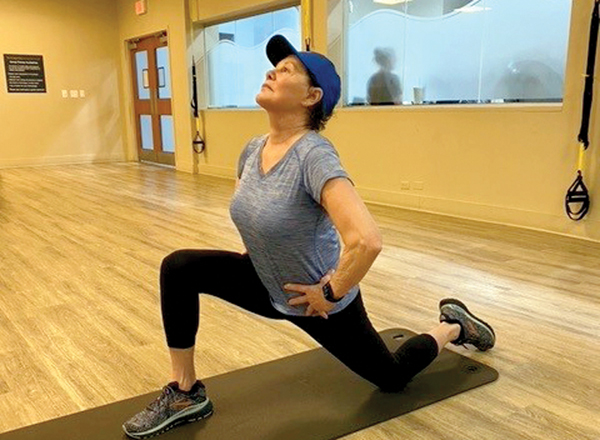The importance of flexibility for dinghy sailors (and others)
I said it last month, and I’ll say it again: dinghy racers are athletes. That’s why last month I focused on adding a few plyometric exercises into your fitness routine to help you develop the explosive power dinghy sailing demands.

But there’s a flip side to power: flexibility. Power and speed are key to success, but the work it takes to build them often leads to tightness. And anyone who has ever tried to fold into just the right position to leeward on a light-air Chesapeake downwind or to keep hiking out while simultaneously reaching all the way across the cockpit to adjust a control line knows that flexibility lets you accomplish a lot on a dinghy. If you’re flexible, you’re less likely to be sore at the end of a day of racing, and that means a much more enjoyable social time onshore!
There are a number of routes we can take to develop tightness in our bodies
Overdoing some physical work can do it, but our routine postures can, too. One of the subtle but highly effective ways to get your body out of whack these days is spending lots of time sitting. And while there are people who don’t have to spend time in an office setting, many (most?) dinghy sailors like me spend the “9-5” sitting at a desk, clacking away at a computer.
Certainly, working on spending less time sitting can help. Take breaks and stand up every 30 minutes. Try a standing desk. Add in movement “snacks,” which seem to be 2023’s fitness craze. But sometimes, you just have to use a chair.
Sitting and typing makes for a very different posture than standing and being active. Think about the way your body folds when you sit down and consider how all the different parts of your body are connected. It’s easy to understand how problems can pop up. Sitting lengthens your hamstring muscles and lets your hip flexors contract and get tighter. Hunching over a keyboard often lets your shoulders droop forward. And sitting curves your body, stretching your back relative to the front of your core.
Try these stretches to put you on the way toward being a more nimble dinghy sailor:
Kneeling hip flexor stretch: counteract tightness in the front of your hips by opening things up.
- Kneel on the floor with your left knee on the ground (with your lower leg pointing straight behind you) and your right foot flat on the ground in front of you (so that your knee is bent at a 90-degree angle).
- Keeping your posture as tall as you can, put your hands on your hips, focus on tucking your pelvis under you, and slowly shift your weight forward—you may end up bending your right knee a bit. You should feel a stretch through the front of your left thigh and groin.
- Want a deeper stretch? Reach your left arm up.
- Hold the stretch 10-15 seconds and repeat on the other side.
Front core stretch: ease away those hours of leaning forward at your desk.
- Find a nice clean floor area—ideally with a mat or rug for a little added comfort.
- Lie down on your belly with your legs stretched out straight behind you.
- Put your elbows under your shoulders and your forearms parallel to each other. Gently lift your head and upper torso up into a light backbend. Take a few breaths here and feel how this is stretching not only your upper back, but also your belly area.
- Want a deeper stretch? Straighten your elbows a bit.
Shoulder-chest-posture stretch: counteract hours of hunching your shoulders over your keyboard… and that too-familiar texting pose.
- Find a not-too-wide doorframe. With each elbow bent at a right angle, lift your arms up and settle your forearms into the doorframe.
- Slowly step through the door a bit until you feel a stretch in your chest. Hold this for 10-15 seconds before stepping back to ease off the stretch.
- Can’t find the right size doorframe? It’s okay to do one side at a time.
Getting yourself into better balance can really help your time in the boat. These three stretches can get you started, but don’t stop here! Think about how you spend your time. Be sure to balance things out with relevant stretches. If it hurts during the week, it will hurt even more at regattas. Preventative maintenance can go a long way.
by Kim Couranz
About the Author: SpinSheet Small Boat Scene columnist for more than a dozen years, Kim Couranz has earned several national and world titles in Laser Radials (ILCA 6) and Snipes. She has also raced J/22s, J/24s, and Ynglings on an international level.




